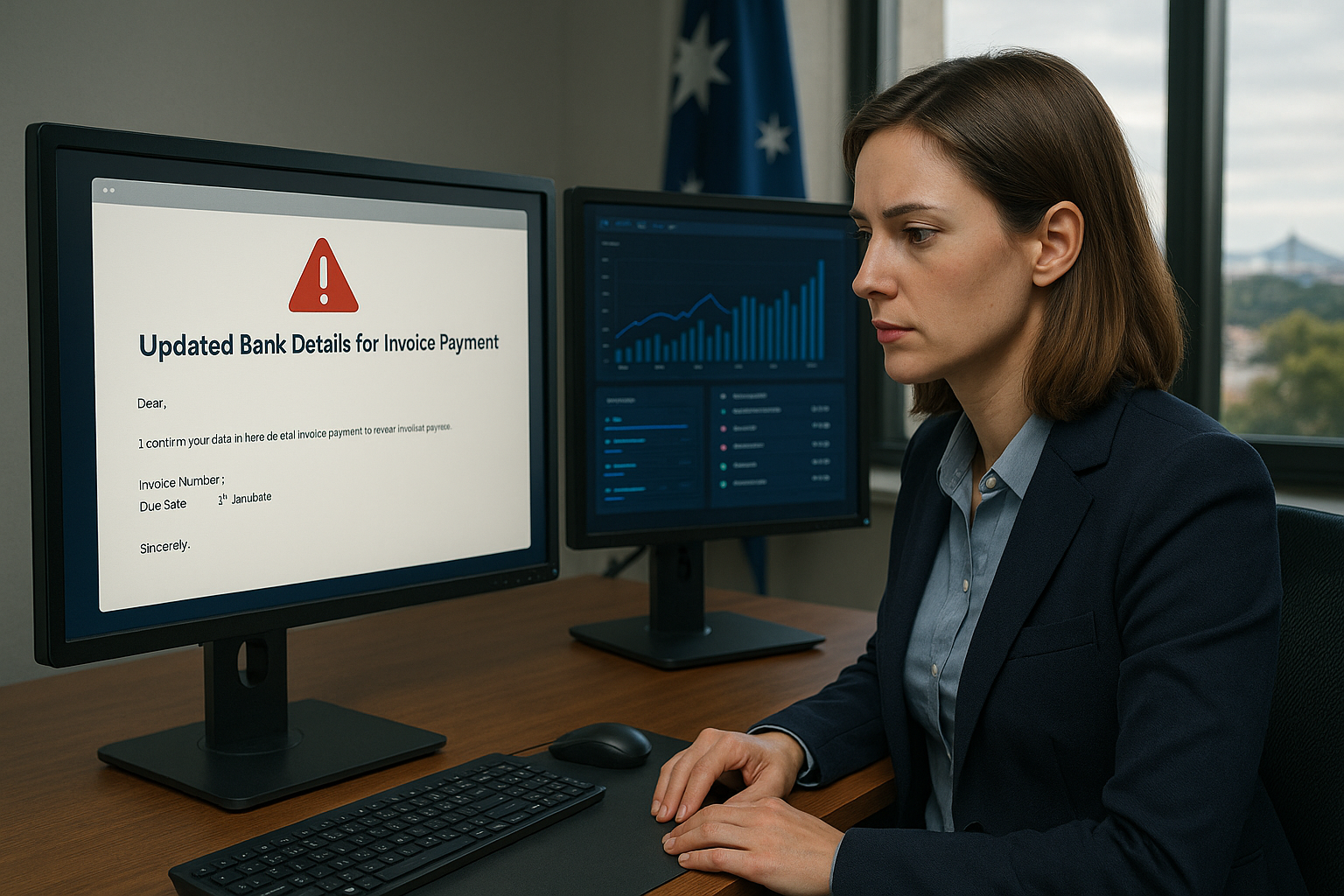How Real-Time Transaction Monitoring Prevents Fraud
.svg)
Fraud transaction monitoring has become a critical defence in the fight against increasingly complex financial crime.
In today’s fast-moving digital economy, the volume and speed of financial transactions have opened new avenues for fraud. Traditional, rules-based systems often fall short in identifying sophisticated schemes that exploit system gaps and transaction delays. As fraudsters grow more agile, organisations must respond with equally intelligent and proactive solutions.
This is where fraud transaction monitoring steps in. By enabling real-time surveillance and analysis of transactional behaviour, this technology allows financial institutions to detect anomalies, flag suspicious activity, and prevent fraud before it causes damage. It not only helps protect revenue but also reinforces trust in digital financial services.
In this blog, we explore how fraud transaction monitoring works, why it’s essential in today’s threat landscape, and the advanced technologies empowering real-time fraud detection and response.

What is Real-Time Transaction Monitoring?
Real-time transaction monitoring is a proactive approach used by financial institutions and businesses to scrutinise every transaction as it happens. This process involves the continuous analysis of transactional data to identify any signs of fraud or suspicious activities. Advanced technologies like machine learning and artificial intelligence help monitor transactions in real time. These systems can quickly analyse large amounts of data. They can also find unusual patterns that may suggest fraud.
Traditional fraud prevention methods mainly relied on manual reviews and post-transaction analysis, which often resulted in delayed detection of fraudulent activities. Real-time transaction monitoring, on the other hand, allows organisations to identify potential fraud as it occurs, enabling them to take immediate action and prevent any financial losses.
Let's delve deeper into how real-time transaction monitoring works. When a transaction happens, like a credit card purchase or an online transfer, the data is quickly captured. It is then sent to the monitoring system. This system then applies a series of sophisticated algorithms to analyse the data in real-time.
These algorithms look at different factors. They consider the transaction amount and where it takes place. They also review the customer's past behaviour. Finally, they check for patterns or trends that might suggest fraud. The system compares the current transaction against a vast database of known fraud patterns and uses machine learning techniques to identify new and emerging fraud patterns.
Once the system detects a potentially fraudulent transaction, it triggers an alert to the organisation's fraud detection team. This team can then review the transaction in detail, gather additional information if necessary, and make an informed decision on whether to block the transaction or allow it to proceed. This entire process happens within seconds, ensuring that fraudulent activities are identified and addressed in real-time.
Real-time transaction monitoring not only helps organisations prevent financial losses but also protects their reputation. By swiftly detecting and stopping fraudulent activities, businesses can maintain the trust of their customers and partners. Additionally, real-time monitoring systems can provide valuable insights into emerging fraud trends, allowing organisations to continuously improve their fraud prevention strategies.
The Growing Threat of Fraud in Today's Digital World
Fraud has become increasingly prevalent in today's digital world, posing significant risks to businesses and consumers alike. The advancement of technology has provided fraudsters with more sophisticated tools and techniques to exploit vulnerabilities in transactional systems.
According to recent reports, financial fraud alone cost businesses billions of dollars annually. From identity theft to account takeovers and online scams, fraudsters continuously adapt their tactics to exploit weaknesses in existing fraud prevention measures.
Furthermore, the COVID-19 pandemic has exacerbated the threat of fraud. The rapid shift towards digital transactions and remote working has created new opportunities for fraudsters to exploit vulnerabilities. Organisations need robust fraud prevention strategies to mitigate the growing risk landscape.
How Real-Time Transaction Monitoring Prevents Fraud
Real-time transaction monitoring provides organisations with the ability to detect fraudulent activities promptly. By analysing transactional data in real-time, anomalies or patterns associated with fraud can be identified and flagged for further investigation.
One of the key benefits of real-time transaction monitoring is that it allows for the implementation of customisable risk scoring models. These models assign risk scores to transactions based on various factors such as transaction amounts, geographic locations, and user behaviour. Transactions with high-risk scores are prioritised for further scrutiny, enabling organisations to focus their resources on potentially fraudulent activities. This targeted approach not only improves detection rates but also helps minimise false positives, reducing unnecessary disruptions for legitimate customers.
Real-time transaction monitoring also enables organisations to establish dynamic rules and thresholds for different types of transactions. Through the continuous analysis of transactional data, organisations can quickly identify transactions that deviate from normal patterns and trigger alerts for potential fraud. These alerts can be automatically escalated to fraud analysts for immediate action, ensuring that suspicious activities are addressed promptly.
Furthermore, real-time transaction monitoring provides organisations with valuable insights into emerging fraud trends and techniques. By analysing a vast amount of transactional data in real-time, organisations can identify new patterns or behaviours that indicate evolving fraud schemes. This proactive approach allows organisations to stay one step ahead of fraudsters and adapt their fraud prevention strategies accordingly.
In addition to detecting and preventing fraud, real-time transaction monitoring also plays a crucial role in enhancing customer experience. By swiftly identifying and resolving potential fraudulent activities, organisations can minimise the impact on legitimate customers. This not only helps maintain customer trust but also reduces the financial losses associated with fraudulent transactions.
Moreover, real-time transaction monitoring can be integrated with other fraud prevention tools and technologies, such as machine learning algorithms and artificial intelligence. This integration enables organisations to leverage advanced analytics capabilities to detect sophisticated fraud patterns and automate the decision-making process. By combining the power of real-time monitoring with cutting-edge technologies, organisations can create a robust and efficient fraud prevention ecosystem.
Benefits of Real-Time Transaction Monitoring
Real-time transaction monitoring offers several benefits for financial institutions, including:
- Faster Fraud Detection: By analysing transactions in real-time, financial institutions can detect and prevent fraud as it happens, rather than after the fact. This allows them to stop fraudulent transactions before they are completed, saving both the institution and the customer time and money.
- Reduced False Positives: Traditional fraud detection methods often result in a high number of false positives, which can be time-consuming and costly to investigate. Real-time transaction monitoring uses advanced analytics to reduce the number of false positives, allowing financial institutions to focus on legitimate fraud threats.
- Improved Customer Experience: With real-time transaction monitoring, customers can feel more secure knowing that their transactions are being monitored in real-time. This can also lead to faster resolution of any issues that may arise, improving the overall customer experience.
Real-World Examples of Real-Time Transaction Monitoring
Real-time transaction monitoring is already being used by many financial institutions to prevent fraud.
Here are a few real-world examples:
JPMorgan Chase
JPMorgan Chase, one of the largest banks in the United States, uses real-time transaction monitoring to prevent fraud. Their system analyses over 2 million transactions per hour, using advanced analytics and machine learning algorithms to identify and prevent fraudulent activity.
PayPal
PayPal, a leading online payment platform, also uses real-time transaction monitoring to prevent fraud. Their system analyses over 25 billion transactions per year, using advanced analytics and machine learning to identify and prevent fraudulent activity.
Visa
Visa, one of the world’s largest payment networks, uses real-time transaction monitoring to prevent fraud. Their system analyses over 500 million transactions per day, using advanced analytics and machine learning to identify and prevent fraudulent activity.
Let's dive deeper into various industries to understand how real-time transaction monitoring is implemented and the specific challenges it addresses:
Banking and Financial Institutions:
In the banking and financial sector, real-time transaction monitoring is a critical component of fraud prevention. With the rise of digital banking and online transactions, the risk of fraudulent activities has increased significantly. Real-time monitoring allows banks to analyse transactional data as it occurs, enabling them to detect suspicious patterns and behaviours instantly. By leveraging advanced analytics and machine learning algorithms, banks can create sophisticated models that identify potential fraud in real-time. This proactive approach helps banks prevent unauthorised fund transfers, identity theft, and account takeovers, ensuring the security of their customers' assets.
Retail and E-commerce:
Real-time transaction monitoring is vital for the retail and e-commerce industry to combat online fraud. With the increasing popularity of online shopping, fraudsters have found new ways to exploit vulnerabilities in the system. By continuously monitoring transactions, organisations can quickly identify suspicious activities, such as multiple purchases from different IP addresses or unusually large orders. This real-time monitoring enables them to take immediate action, such as blocking fraudulent transactions or suspending suspicious accounts, preventing any financial losses and protecting their reputation. Additionally, real-time transaction monitoring also helps retailers identify legitimate customers and provide a seamless shopping experience, enhancing customer satisfaction and loyalty.
Payment Processors:
Payment processors play a crucial role in facilitating secure transactions between merchants and consumers. Real-time transaction monitoring is essential for payment processors to maintain the integrity of their platforms and protect both parties from fraudulent activities. By actively monitoring transactions, payment processors can identify potential fraud in real-time and take immediate action to block suspicious transactions. This not only safeguards the financial interests of merchants but also protects consumers from unauthorised charges or fraudulent transactions. Real-time transaction monitoring also helps payment processors identify emerging fraud trends and develop proactive measures to stay ahead of fraudsters.
These real-world examples demonstrate the importance of real-time transaction monitoring in combating fraud across various industries. By leveraging advanced analytics, machine learning algorithms, and continuous monitoring, organisations can proactively detect and prevent fraudulent activities, safeguarding their financial assets and maintaining trust with their customers.
{{cta-ebook}}
How to Implement Real-Time Transaction Monitoring
Implementing real-time transaction monitoring requires careful planning and consideration. Here are some essential steps to guide organisations in the implementation process:
- Assess Needs and Objectives: Organisations should evaluate their fraud prevention needs and define their objectives for implementing real-time transaction monitoring. This includes determining the specific types of fraud they want to target, understanding their existing systems and infrastructure, and establishing key performance indicators to measure the effectiveness of the monitoring system.
- Select the Right Technology: Choosing a suitable real-time transaction monitoring solution is crucial. Organizations should look for a solution that can handle large volumes of data, provides advanced analytics capabilities, and offers customisable rule sets and risk scoring models. Additionally, integration with existing systems and scalability should be taken into consideration for long-term success.
- Implement Data Integration and Analytics: Successful implementation of real-time transaction monitoring requires seamless integration with transactional data sources, such as payment gateways and core banking systems. Organisations should establish robust data pipelines and apply advanced analytics techniques to gain meaningful insights from the data.
- Establish Workflows and Response Mechanisms: Organisations should define clear workflows and response mechanisms for handling alerts generated by the real-time transaction monitoring system. This includes establishing escalation procedures, assigning responsibilities to fraud analysts, and implementing automated actions for immediate response.
- Continuously Monitor and Optimise: Real-time transaction monitoring is an ongoing process that requires continuous monitoring and optimisation. Organisations should regularly review the system's performance, analyse emerging fraud trends, and update rule sets and risk scoring models to stay ahead of evolving fraud techniques.
Now, let's dive deeper into each step to gain a comprehensive understanding of how to successfully implement real-time transaction monitoring:
1. Assess Needs and Objectives: When assessing fraud prevention needs, organisations should consider the specific industry they operate in and the types of transactions they handle. By understanding their unique risks and vulnerabilities, organisations can tailor their real-time transaction monitoring system to effectively detect and prevent fraud. Defining clear objectives is essential to measure the success of the implementation process and ensure alignment with overall business goals.
2. Select the Right Technology: The choice of technology plays a crucial role in the effectiveness of real-time transaction monitoring. Organisations should consider factors such as scalability, flexibility, and ease of integration with existing systems. Advanced analytics capabilities, such as machine learning and artificial intelligence, can enhance the system's ability to detect complex fraud patterns and adapt to evolving threats. Additionally, organisations should evaluate the vendor's reputation, customer support, and track record in the industry.
3. Implement Data Integration and Analytics: Seamless integration with transactional data sources is vital for real-time transaction monitoring. Organisations should establish robust data pipelines that collect and consolidate data from various sources, such as payment gateways, core banking systems, and third-party data providers. Applying advanced analytics techniques, such as anomaly detection and behavioural analysis, can help organisations gain meaningful insights from the data and identify suspicious activities in real-time.
4. Establish Workflows and Response Mechanisms: Clear workflows and response mechanisms are essential for efficient handling of alerts generated by the real-time transaction monitoring system. Organizations should define escalation procedures to ensure timely action on high-risk transactions. Assigning responsibilities to fraud analysts and establishing communication channels between different teams can streamline the response process. Implementing automated actions, such as blocking transactions or triggering additional authentication measures, can help prevent fraudulent activities in real-time.
5. Continuously Monitor and Optimise: Real-time transaction monitoring is not a one-time implementation but an ongoing process. Organisations should regularly monitor the system's performance, analysing key metrics and indicators to identify areas for improvement. Staying updated on emerging fraud trends and evolving fraud techniques is crucial to adapt the rule sets and risk scoring models accordingly. Continuous optimisation ensures that the real-time transaction monitoring system remains effective in detecting and preventing fraud.
By following these steps, organisations can implement real-time transaction monitoring effectively, safeguarding their financial transactions and protecting themselves from fraudulent activities.
The Future of Fraud Prevention: Innovations in Real-Time Transaction Monitoring
The fight against fraud is an ongoing battle, and organisations need to adapt to emerging trends and technologies to stay one step ahead of fraudsters. Innovations in real-time transaction monitoring offer promising solutions for the future of fraud prevention:
- Advanced Artificial Intelligence: Leveraging the power of artificial intelligence, real-time transaction monitoring systems can continuously learn from historical data and identify new patterns of fraudulent behaviour. By analysing vast amounts of data and applying machine learning algorithms, these systems can detect even the most sophisticated fraud attempts.
- Behavioural Biometrics: Real-time transaction monitoring can incorporate behavioural biometrics, such as keystroke dynamics and mouse movements, to further enhance fraud detection. By analysing the unique behavioural patterns of individual users, organisations can identify anomalies that may indicate fraudulent activities.
- Collaborative Intelligence: Real-time transaction monitoring systems can leverage the collective intelligence of multiple organisations to enhance fraud detection and prevention. By sharing anonymised transactional data and insights, organisations can collectively stay ahead of emerging fraud trends and strengthen their defences.
As fraudsters continue to evolve their tactics, organisations must invest in cutting-edge technologies and approaches to prevent fraud effectively. Real-time transaction monitoring, coupled with advanced analytics and artificial intelligence, provides a powerful defence against fraudulent activities, safeguarding the financial well-being of businesses and protecting consumers from financial losses.
As we navigate the complexities of fraud prevention in the digital age, it's clear that innovative solutions like real-time transaction monitoring are essential. Tookitaki's FinCense platform stands at the forefront of this battle, offering an integrated suite of anti-money laundering and fraud prevention tools designed for both fintechs and traditional banks. With the power of federated learning and the AFC Ecosystem, FinCense elevates your financial crime prevention strategy, ensuring fewer, higher quality alerts, and robust FRAML management processes. Don't let fraudsters outpace your defences. Talk to our experts at Tookitaki today and empower your organisation with comprehensive risk coverage and compliance that's ready for the future of financial security.
Experience the most intelligent AML and fraud prevention platform
Experience the most intelligent AML and fraud prevention platform
Experience the most intelligent AML and fraud prevention platform
Top AML Scenarios in ASEAN

The Role of AML Software in Compliance









